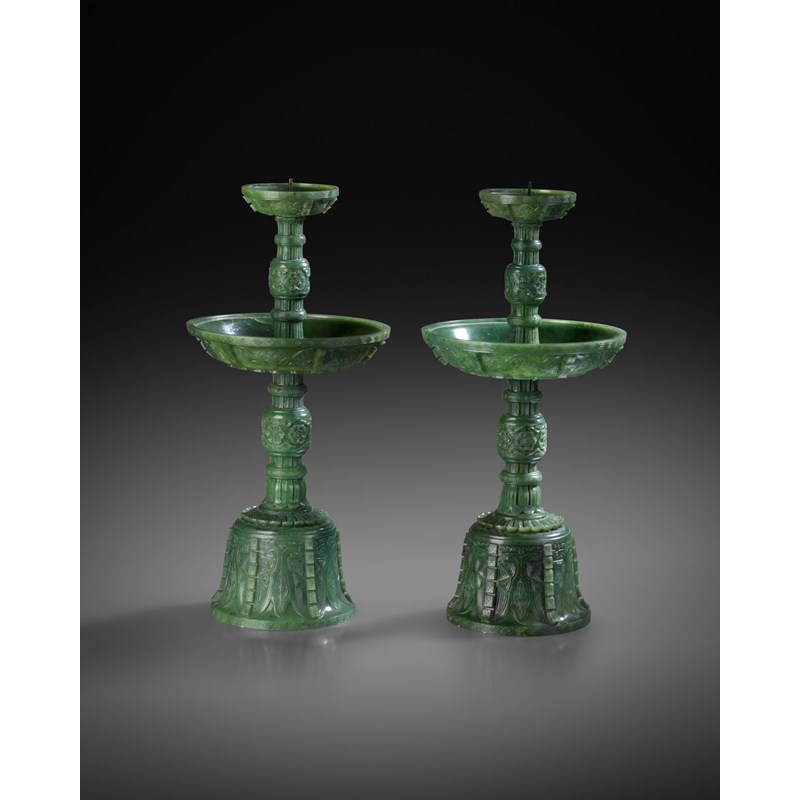The Lawrence Jade Collection - 14 Nov 2023
A PAIR OF FINE CHINESE SPINACH-GREEN JADE PRICKET CANDLESTICKS
A PAIR OF FINE CHINESE SPINACH-GREEN JADE PRICKET CANDLESTICKS
QIANLONG 1736-95
The bell-shaped bases carved in low relief with overlapping pendent leaves enclosing geometric scrolls, the tall stems worked with bands of lappets and prunus blossoms reserved on leiwen to the raised bulbous sections, each rising to a central broad drip pan and surmounted by a smaller drip pan set with a metal pin, the flared trays decorated with ruyi motifs, carved with six notched flanges to each principal section, the rims incised with borders of key fret, with black specks dispersed throughout the dark green stone, 32.3cm. (2)
Provenance: the Lawrence Collection of jades and hardstone carvings, purchased from Spink & Son prior to 1959.
Candlestick prototypes can be found in China as early as the Han dynasty, usually in ceramic, bronze and lacquer. Jade candlesticks became especially popular during the Qing dynasty, when they were used together with jade incense burners and vases to perform ceremonies at altars.
The design and decoration of these pieces show an interesting use of traditional elements, but with several innovations. For instance, in addition to the cicada blades, the rims of the pans and base are incised with fine angular spirals, leiwen. While these motifs appeared as early as on the ritual bronze vessels of the Shang and Zhou periods, the lotus and prunus are clearly much later being more common features of Ming and Qing decorative art. In traditional Chinese symbolism the lotus is a sacred flower held in high esteem by both Buddhists and Daoists; it symbolizes purity, perfection, summer and fruitfulness. The seat of the Buddha is usually decorated with lotus. The Daoist Immortals carry lotus-stems in their hands. Prunus is also well known for its symbolism of seasonality (Winter) and the implication of purity and friendship. By employing these ornamental motifs, the Qing Emperors expressed their desire to be the heirs of ancient Chinese tradition and at the same time, that the objects had to be understood by later generations.
Cf. Compendium of Collections in the Palace Museum, Jade, vol.8, p.261, no.224 for a comparable single candlestick; see also pp.262-264, nos.225 and 227 for related pairs of candlesticks in spinach-green jade; see also G Wills, Jade of the East, p.132, no.124 for another similar pair.
清乾隆 碧玉雕花卉紋出戟燭臺 一對
來源:勞倫斯珍藏玉石,1959年前購於Spink & Son。




 Live online bidding is available via our own
Live online bidding is available via our own